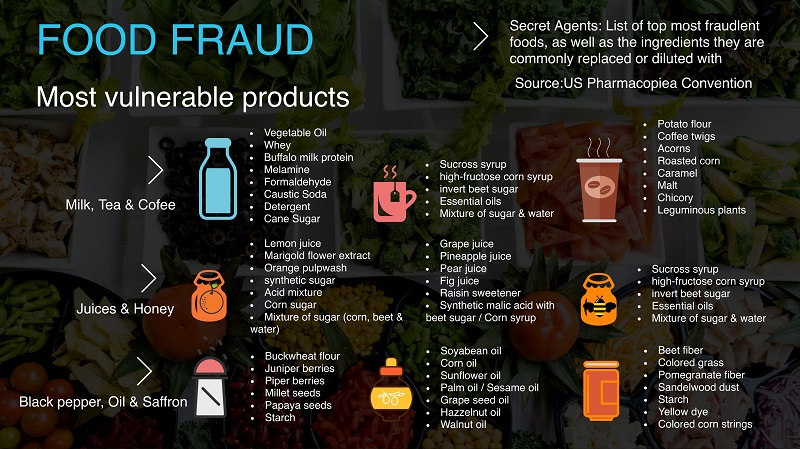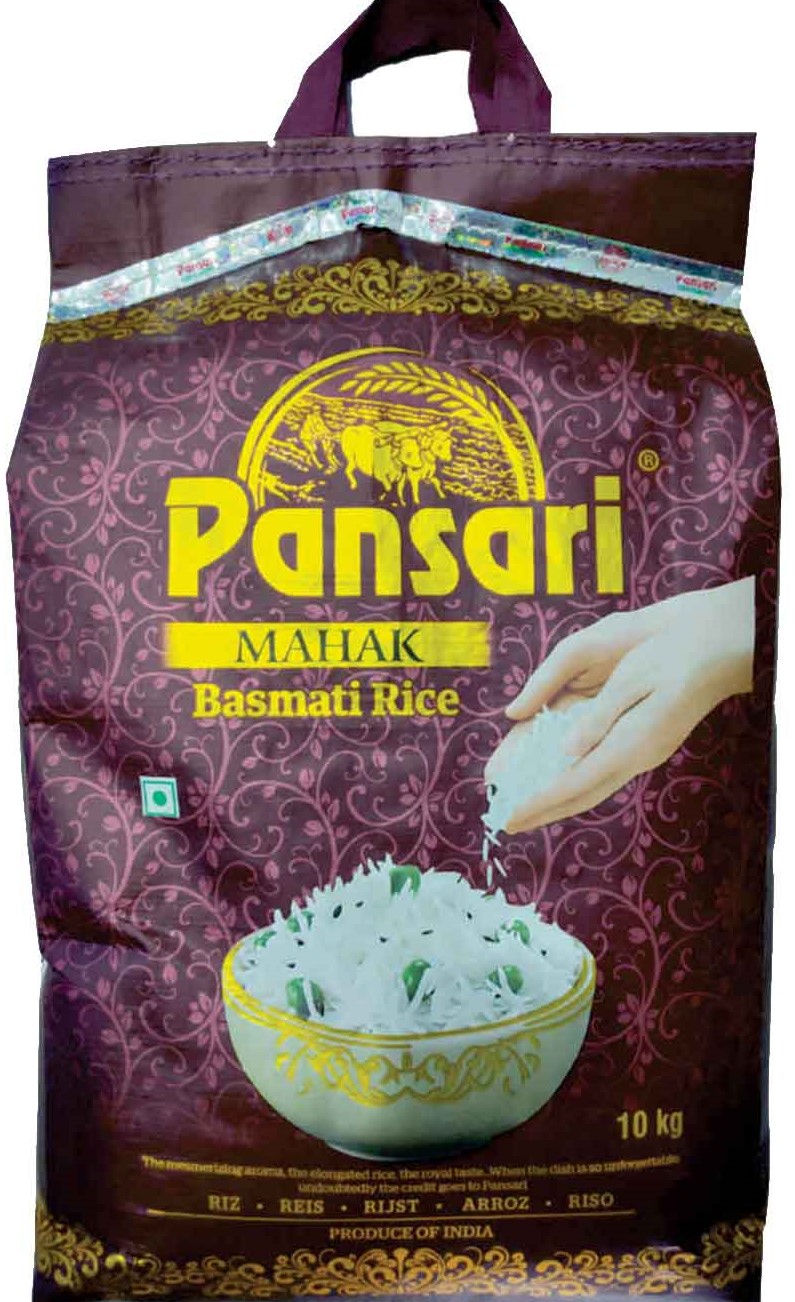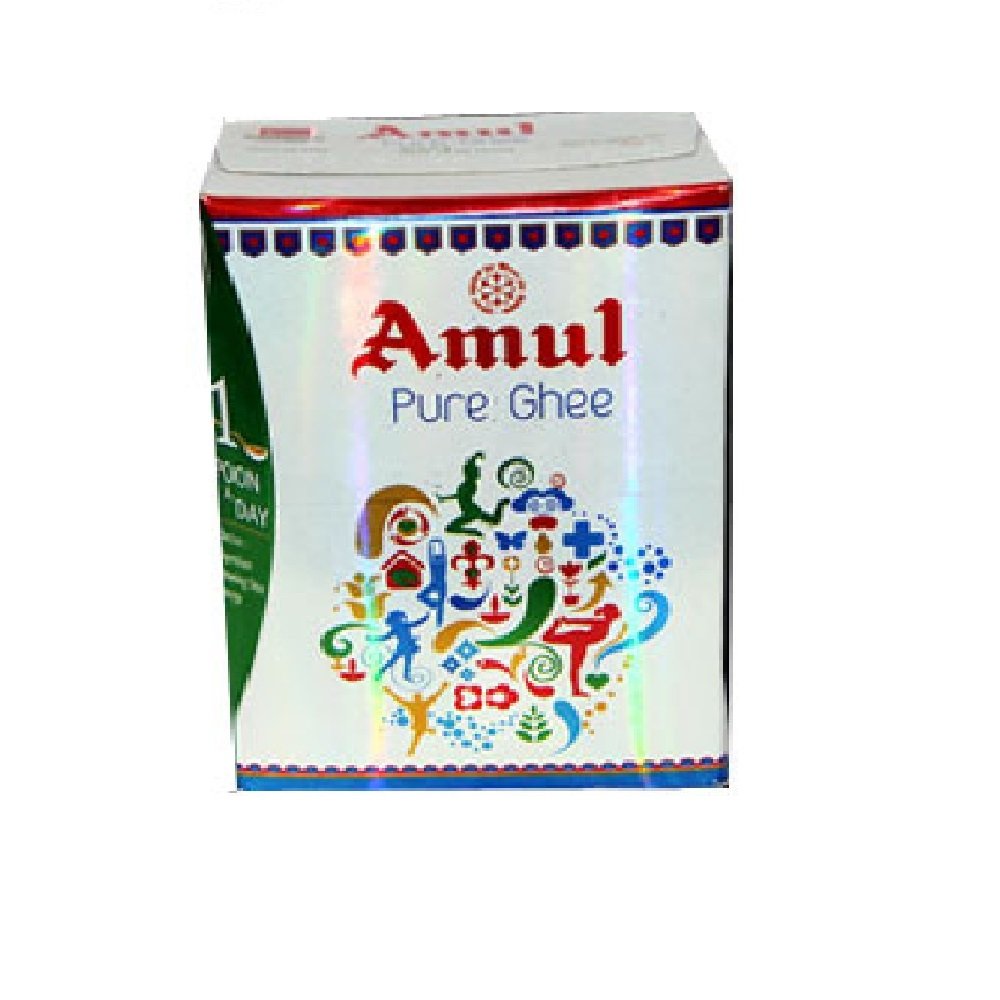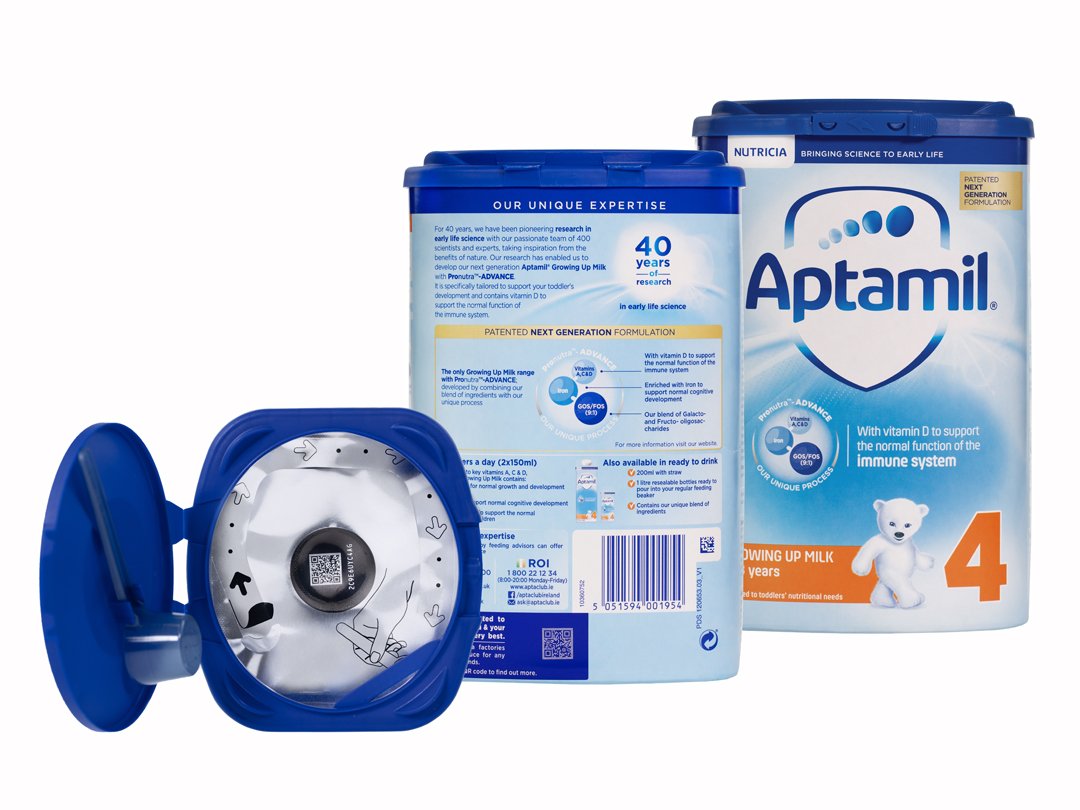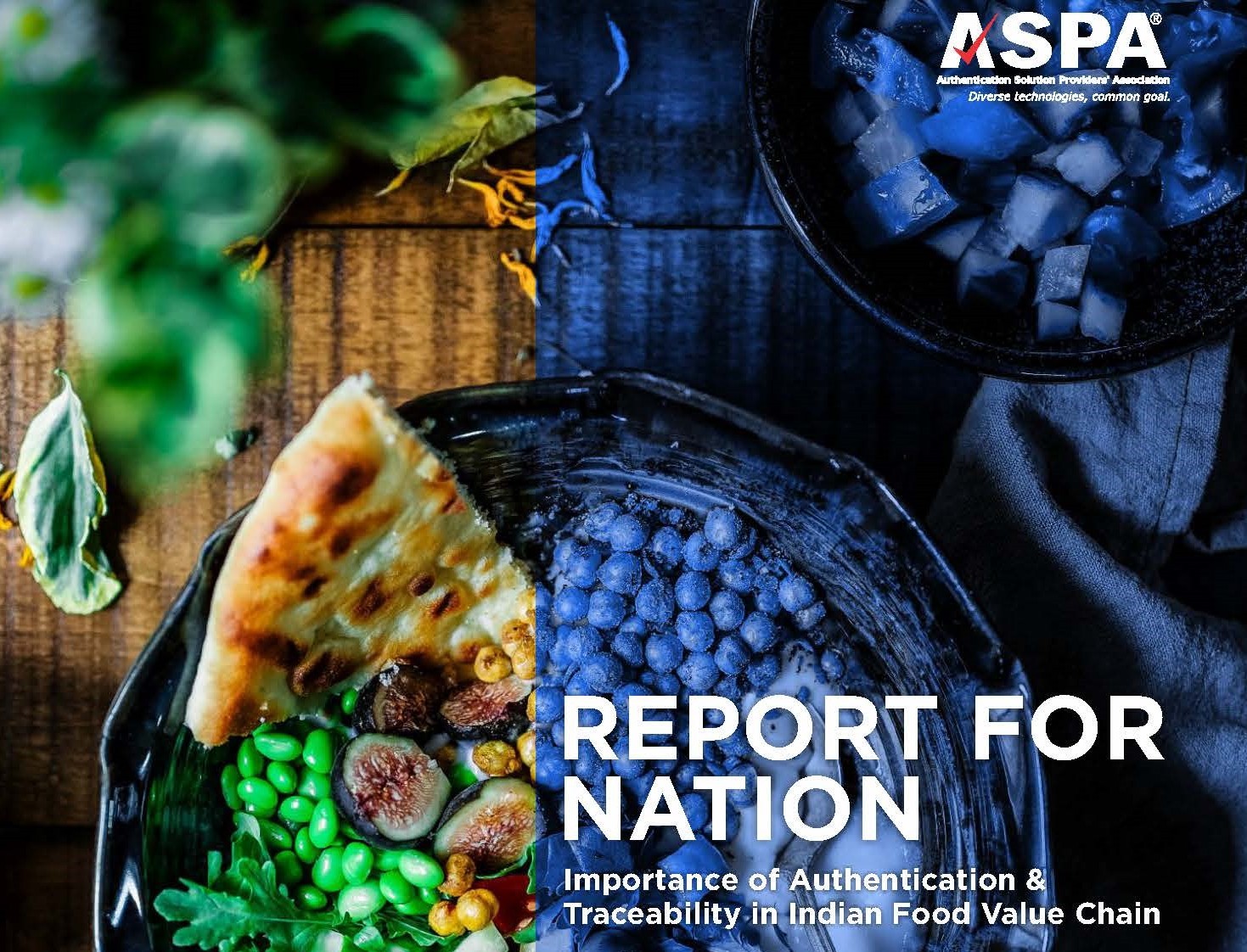Food & Beverages
Food Fraud
Food fraud can be prevalent and far-reaching. According to the Food and Agriculture Organization (FAO), food fraud is defined as the “intentional adulteration of food for financial gain. This could include deliberate substitution, dilution, counterfeiting or misrepresentation of food, ingredients or packaging, or packaging; or even false or misleading statements made about a product”. Criminals in the systems can cause public health risks (e.g., contaminated olive oil with common allergens such as seed oil), loss of consumer confidence, and market inefficiencies, where those providing genuine high-quality products lose out to those who only claim to do the same.
What is the Extent of the Food Fraud Problem?
Food fraud can be prevalent and far-reaching. According to the Food and Agriculture Organization (FAO), food fraud is defined as the “intentional adulteration of food for financial gain. This could include deliberate substitution, dilution, counterfeiting or misrepresentation of food, ingredients or packaging, or packaging; or even false or misleading statements made about a product”. Criminals in the systems can cause public health risks (e.g., contaminated olive oil with common allergens such as seed oil), loss of consumer confidence, and market inefficiencies, where those providing genuine high-quality products lose out to those who only claim to do the same.
Understanding its seriousness, Interpol, together with Europol, is conducting operation OPSON since 2011 targeting fake and sub-standard food beverages. In the latest seizure conducted between December 2018 – April 2019, 78 countries took part and resulted in more than 67,000 checks carried out at shops, markets, airports, seaports, and industrial estates. In total, 672 individuals were arrested, around 16000 tonnes and 33 million litres of likely fake food and drink worth Euro 100 million seized.
In the Indian scenario, the situation is not different. As per findings, the Food regulator analyses a total of 106,459 samples across the country and find over 15.8% of food samples as sub-standard, 3.7% unsafe, and 9% mislabeled during the year 2018-19. It is the first year the data has been compiled for unsafe, sub-standard and labelling defects separately. At least ten states in India are unequipped to ensure food safety, owing to the scarcity of staff and food testing laboratory infrastructure.
A few years back, Harcourt Butler Technical University researched Kanpur, Uttar Pradesh which is a big market for edible oil and supplies to various States. The report found that 70 percent of our mustard oil available in the market is adulterated. In such a situation, finding 70 percent adulteration in more than 120 samples of oil of 30 big companies is a dangerous sign. In 15 percent of the samples, mustard was less than 20 percent, that is, it did not know what oil was.
Types of Food Fraud
Existing research on product fraud and counterfeiting has defined seven distinct types of food fraud. These fraudulent incidents include tampering, adulteration, tampering, refilling, pilferage, diversion, and counterfeiting etc. etc.
Reasons for increasing incident of food fraud
Globalization, consolidation of manufacturing, urbanization, and other large-scale trends may provide insights into why food fraud is growing. Globalization requires more diverse and longer food supply chains to meet the demands of growing urban populations. Global economics enable criminal activity since remoteness and anonymity are often characteristics of such supply chains. All these features of the fraud opportunity contribute to why this emerging risk evolves so quickly. The very nature of this rapid and varied evolution creates further challenges in determining the extent of the food fraud risk. Researchers usually rely on historical incidents and on quantitative analysis to identify emerging risks, which are then used to create early warning systems. But there is frequent evidence of creative fraudsters who seem to evolve constantly, to evade the most recent detection hurdles. While the exact probability or risk may not be readily identifiable, the vulnerability or fraud opportunities are more static. Many traditional food risk assessment tools are not holistically applicable for trying to quantify or predict food fraud incidents.
Risks associated with food fraud
Last year in December 2019, Delhi Police have busted a gang involved in the manufacturing of fake cumin operating for the previous seven years. The police seized fake cumin in more than 450+ bags each containing 20 Kg of cumin made of stone dust, semolina and a grass paste. Food quality and safety have never been an urgent priority. In all these cases, the findings were shocking; they are mixing such things which, even if minor diseases, are also causing cancer cells in the body to grow without cause. They are also causing heart attacks. All this is happening in the branded items, for which you and we agree that while paying a heavy price, it would be good.
Three types of public health risks can result from food fraud: Direct, Indirect, and Technical. Direct food fraud risk occurs when there is an immediate or imminent risk to the consumer, such as the inclusion of an acutely toxic or lethal contaminant. Indirect food fraud risk occurs when the consumer is put at risk through long-term exposure, such as the buildup in the body of a chronically toxic contaminant through the ingestion of low doses. Indirect risk also includes the omission of beneficial ingredients, such as preservatives or vitamins. Technical food fraud risk is non-material. For example, food documentation fraud occurs when product content or country-of-origin information is deliberately misrepresented.
The efficient food fraud countermeasures
As food fraud is an economically motivated crime that can have public health risks, it is important to understand that mitigating the risks of food fraud requires a multi-disciplinary approach. Some of the useful disciplines, beyond Food Science, include risk assessment (Criminology), Securing Packaging and Supply Chain. Each of these disciplines provides insights for understanding the nature of food fraud and contributes proactive solutions to reduce food fraud.
- Risk Assessment
Food fraud is an illicit activity that human actors perpetrate for economic gain. The field of criminology, which tries to better understand both criminals (i.e., why people offend) and crime events (i.e., the process to “create” crime), is, therefore, a useful platform for examining food fraud events and the food fraudsters themselves. For example, environmental criminology—which encompasses routine activity theory, the crime analysis triangle, and situational crime prevention—focuses on understanding and responding to the opportunity structures that make crime possible. In practice, numerous opportunities for reducing techniques are effective in reducing various types of crime and disorder across many different communities. And the concepts that underlie these techniques (e.g., increasing the risk or effort of crime), as well as others rooted in criminology, may have the same potential for reducing food fraud. - Secured Packaging – Secure packaging ensures that the product is genuine and has not tampered.
Secured packaging reduces the risks of tampering and adulteration. It protects food, conveys product information, and adds functionality for consumers. Physical authentication solutions such as a tamper-evident hologram, holographic shrink sleeves, hidden text printed using security or magnetic ink solutions can be used which act as first deterrents to the counterfeiter. The hidden and covert features help a trained person in identifying fake products with genuine. Anti-counterfeiting measures protect both the manufacturer and the end-user from counterfeit or tampered products. Packaging can also provide anti-counterfeiting security features, enable product track-and-trace and pedigrees, and facilitate product authentication by consumers and law enforcement officials. - Secure Supply Chain Management and procurement
Knowing the source and history of foods is important. Fraudsters can perpetuate their crimes through vulnerabilities in food supply chains. End-to-end visibility and supply chain transparency are critical management tools for food brand owners. Track-and-trace and product pedigrees, combined with market monitoring and testing, are key tactics for proactively mitigating food fraud risks. Soon, upcoming techniques such as Bio tracing, Nanosensor, GPS and GIS would be playing an important role together with digital authentication technologies.
Benefits of authentication & traceability solutions
Fundamentally, India requires more development in current national food laws, as well as needs to adopt an effective traceability system to improve and change within the current food industry and food supply chain. There are various reasons which enforce the adoption of authentication solutions in the interest of the country; however, a few important are as follows:
- Minimizing the risk of food safety: Apart from food wastage, food safety is also a significant concern in India. The principal cause behind food safety is the discrepancy and uncertainty in the food safety monitoring system, for example, milk adulterants, the problem of antibiotic in honey, contaminated meat. Thus, there is a requirement to implement an effective traceability system in the FSC that can help in providing information about the product origin, ingredient and processing method. Some incentives are taken from India, such as food safety and standards authority of India give the suggestion and guideline to develop an efficient traceability system to identification /removal of unsafe food and preventing customers from harmful food in the market. Farm to fork traceability requires that the processes of internal and external traceability be effectively conducted.
- Reduce product recalling cost: Food safety issues that trigger a recall are relatively rare but pose significant financial risks to the food industry. A survey of Grocer Manufacturers Association (GMA) companies found that 81% of respondents evaluated the financial risk from recalls as “significant to catastrophic”. Of those surveyed, 58% indicated that they had been “affected by a product recall in the past five years”, while 23% of those affected estimated the cost to be more than $30 million, which accounts for both direct recall costs and losses in sales.Authentication & Traceability could reduce the exposure to food outbreak risks by making it faster, more efficient and more feasible to identify a source of food contamination precisely, thus containing the impact. Currently, these processes are time-intensive and costly. For example, the 2018 outbreak of E. coli infections linked to romaine lettuce from the Yuma growing region took about three months to resolve and resulted in 210 individuals falling ill, 96 hospitalizations and five deaths.
- Reduce food wastage: Globally, approximately 1.3 billion tonnes, or one-third of all food produced, is wasted or is lost in the supply chain. Supply-chain inefficiency is a core contributor to food loss across food systems and is a particularly strong cause of loss in developing countries. For example, in Sub-Saharan Africa, over 35% of fruit and vegetable production is lost or wasted during post-harvest, processing, or distribution, whereas in Europe, less than 15% of production is lost or wasted during these same stages. As per the UN’s Food and Agriculture Organization (UNFAO) report, India also lost 40% of its food during the supply chain. There is various reason behind the wastage of food in the present food supply chain (FSC) system such as lack of storage space, improper postharvest management, inadequate transportation facilities, inefficient distribution, lack of infrastructural facilities, lack of refrigerated transport, lack of awareness, stock management inefficiencies, corruption, natural calamities and information regarding the production.
- Visibility & transparency in Indian products: In the last half-decade 2009-2013, the exports of India have risen phenomenally. Today, India has been exported many farming products such as mango, banana, onion, ladyfinger, pomegranate, and more to many parts of the world under the guideline of Agricultural & Processed Food Products Export Development Authority (APEDA), and Agriculture Marketing (AGMARK). Food Safety and Standards Authority of India aims to give a comprehensive view to food business operators in terms of the behavior of food recall portal, as well as how they should be carried out a food recall portal in order to develop an efficient rapid identification system, removal of unsafe food, and preventing customers from potentially hazardous food in the market. This is to take traceability as an integral part of food logistics.
- Agro-terrorism threat: A disease outbreak in an agricultural system, which may affect financially by reducing the food supply and drive the food prices up in the market, is an outcome of agro-terrorism. In 2001, a foot-and-mouth disease outbreak severely affected Uruguay, resulting in costs of $243.6 million.With 3.8 cattle per capita, beef is Uruguay’s second-largest export product. As a result, disease outbreaks like this pose a significant economic risk to the country. Traceability system plays an important to control such types of agro-terrorism activities. The prevention of the “agro-terrorism” can motivate and drive the FSC actor to implement the traceability system in their respective supply chain.
- Certifications: Food certification such as organic food certification, fair trade certification, and Halal certification. The prerequisite of these certifications is the product origin, ingredient, processing, and logistics and aligned operations in the documented form. Therefore, to obtain such type of information, a traceability system is required in the FSC. These certification schemes drive the FSC partners to implement the traceability system to achieve improved sustainability and gain a competitive advantage. Effective implementation of the traceability system may assure good public health, which can motivate the government in legislating laws to regulate the traceability system in FSC.

